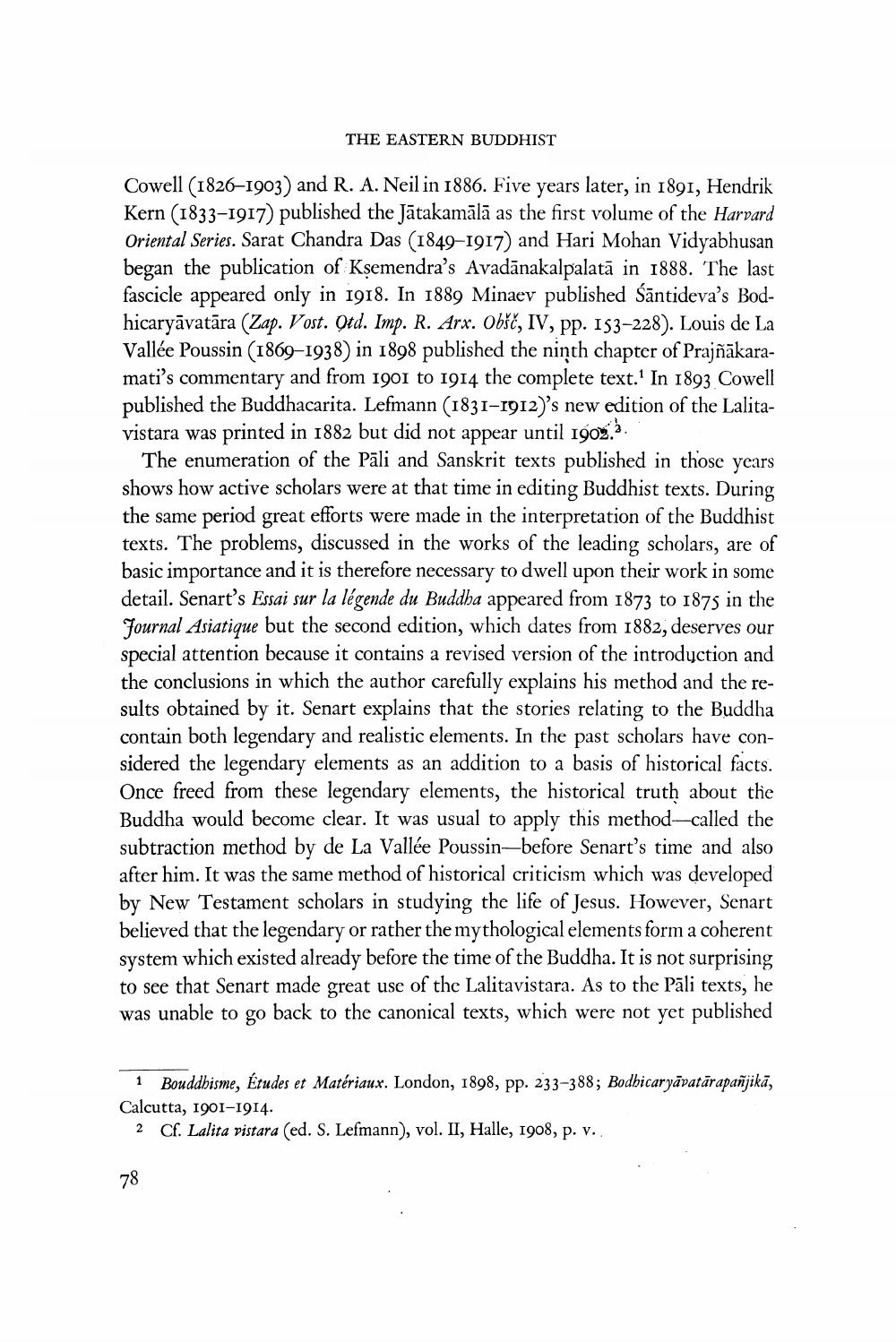________________
THE EASTERN BUDDHIST
Cowell (1826-1903) and R. A. Neil in 1886. Five years later, in 1891, Hendrik Kern (1833-1917) published the Jātakamālā as the first volume of the Harvard Oriental Series. Sarat Chandra Das (1849-1917) and Hari Mohan Vidyabhusan began the publication of Kṣemendra's Avadānakalpalata in 1888. The last fascicle appeared only in 1918. In 1889 Minaev published Santideva's Bodhicaryāvatāra (Zap. Vost. Otd. Imp. R. Arx. Obšč, IV, pp. 153-228). Louis de La Vallée Poussin (1869-1938) in 1898 published the ninth chapter of Prajñākaramati's commentary and from 1901 to 1914 the complete text.1 In 1893 Cowell published the Buddhacarita. Lefmann (1831-1912)'s new edition of the Lalitavistara was printed in 1882 but did not appear until 1902.
The enumeration of the Pali and Sanskrit texts published in those years shows how active scholars were at that time in editing Buddhist texts. During the same period great efforts were made in the interpretation of the Buddhist texts. The problems, discussed in the works of the leading scholars, are of basic importance and it is therefore necessary to dwell upon their work in some detail. Senart's Essai sur la légende du Buddha appeared from 1873 to 1875 in the Journal Asiatique but the second edition, which dates from 1882, deserves our special attention because it contains a revised version of the introduction and the conclusions in which the author carefully explains his method and the results obtained by it. Senart explains that the stories relating to the Buddha contain both legendary and realistic elements. In the past scholars have considered the legendary elements as an addition to a basis of historical facts. Once freed from these legendary elements, the historical truth about the Buddha would become clear. It was usual to apply this method-called the subtraction method by de La Vallée Poussin-before Senart's time and also after him. It was the same method of historical criticism which was developed by New Testament scholars in studying the life of Jesus. However, Senart believed that the legendary or rather the mythological elements form a coherent system which existed already before the time of the Buddha. It is not surprising to see that Senart made great use of the Lalitavistara. As to the Pāli texts, he was unable to go back to the canonical texts, which were not yet published
1 Bouddhisme, Études et Matériaux. London, 1898, pp. 233-388; Bodhicaryavatārapañjikā, Calcutta, 1901-1914.
2 Cf. Lalita vistara (ed. S. Lefmann), vol. II, Halle, 1908, p. v..
78




